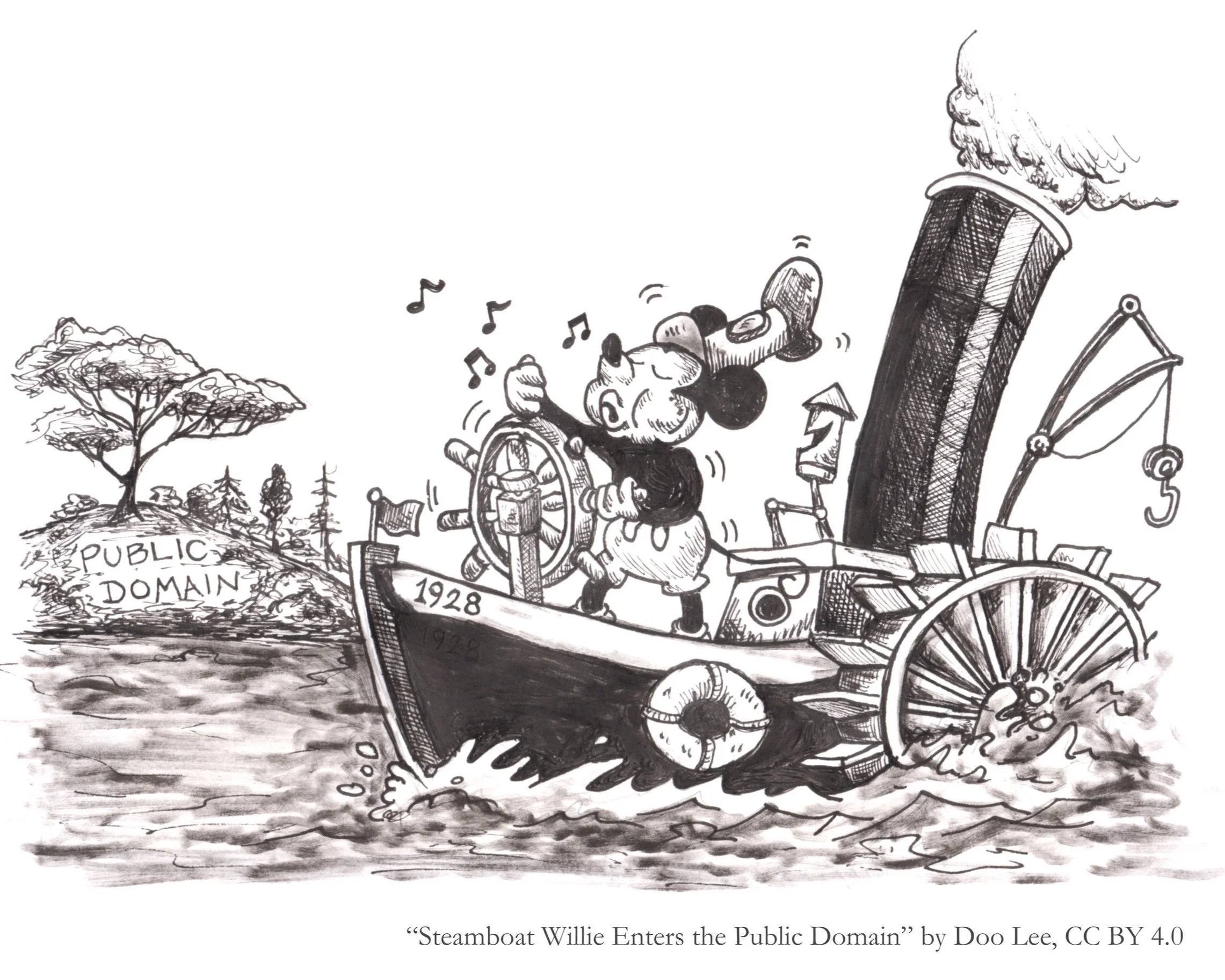Steamboat Willie Enters Public Domain
On January 1, 2024, Steamboat Willie from Walt Disney Animation Studios entered the public domain. Disney successfully extended copyright through lobbying, but recent laws led to its expiration. Horror adaptations of Steamboat Willie are planned. Despite concerns, Disney's brand and trademark protections likely shield it from significant harm.
As of January 1, 2024, Steamboat Willie from Walt Disney Animation Studios has officially entered the public domain in the United States. This event has already spurred fresh adaptations of the Steamboat iteration of the character, drawing parallels to reimaginings of other renowned works and characters that have recently become part of the public domain landscape. Notably, this iconic cartoon served as one of the initial introductions of the beloved Mickey and Minnie Mouse, who are now integral figures in nearly every facet of the company's branding.
Disney has lobbied numerous times for an extension of copyright protection for Mickey Mouse. Initially set to expire in 1984, their advocacy efforts prolonged the copyright for Steamboat Willie when Congress enacted the Copyright Act of 1976. The act extended copyright protection for published works to the author's entire life plus 75 years for corporate-owned works. This ensured Steamboat Willie's protection until 2003.
As the 2003 deadline approached, Disney lobbied Congress again, resulting in the passage of the Copyright Term Extension Act of 1998. This law, often called ‘The Mickey Mouse Protection Act,’ extended the duration of copyrights to the author's lifetime plus 95 years for corporate-authored works or 120 years from the date of creation, whichever comes first. Consequently, Steamboat Willie's copyright finally expired in 2024.
Disney's endeavors to lengthen its copyrights have sparked public debate and backlash concerning the significance of the public domain in shaping popular culture. Criticism has been directed at Disney Animation Studio's heavy reliance on the public domain as a wellspring of inspiration. Notably, many of the studio's most popular productions draw from fairytales within the public domain, exemplified by films such as The Lion King, based on Shakespeare's Hamlet; Beauty and the Beast, inspired by the tale of French novelist Gabrielle-Suzanne Barbot de Villeneuve; and Snow White and the Seven Dwarves, which was derived from the Brothers Grimm story.
The public domain has been instrumental in fostering the creation of these and numerous other movies, presenting a compelling argument for allowing media to enter the public domain. This argument, in turn, catalyzes the development of fresh creative works, contributing to the vitality of popular culture. Consequently, many perceive Disney's efforts to safeguard their properties through copyright while extensively drawing from works in the public domain for inspiration and content creation over the decades as contradictory and counterproductive to the very value that the public domain has provided to the company.
An ongoing trend that captivates popular culture includes turning these new public domain entries into horror adaptations. Most Winnie the Pooh characters entered the public domain in 2022. This spurred a horror movie adaptation featuring Pooh entitled Winnie-the-Pooh: Blood and Honey. The movie currently has a sequel on the way featuring the character Tigger, who entered the public domain after the first film's release. The film generated $4.9 million worldwide at the box office. There are similar plans for Steamboat Willie, with two horror movies and a horror video game adaptation announced.
Many wondered if Disney would again attempt to extend copyright protections to prevent the use of their characters. Still, further success in lobbying Congress seems unlikely after the two extensions they have already granted. Based on current trends of utilizing these properties in the horror genre, subverting Disney’s light-hearted and family-friendly approach to the characters, these adaptations are unlikely to have any impactful or long-term harm on the characters or the company’s property.
Additionally, any harm to Disney's brand from Steamboat Willie entering the public domain is likely curtailed by the company holding a trademark over Mickey as a brand identifier. Newer iterations of the character also retain their copyright for years to come. The public's use of the character is thus limited to the specific iteration of Mickey presented in Steamboat Willie. The public cannot use the character in a way that misleads consumers or makes them think that the work is sponsored or created by Disney. This roadblock likely contributes to most adaptations being limited to online memes, parody videos, horror films, and video games.
Disney's brand, anchored by Mickey Mouse, is unlikely to suffer significant harm from Steamboat Willie’s entry into the public domain. The public domain, known for nurturing creativity and cultural progress, has played a crucial role in some of Disney's triumphs. Yet, the real question is whether the public can, like Disney, transform properties entering the public domain into impactful cultural phenomena rather than just creating modest, small-scale, and budget horror adaptations.

